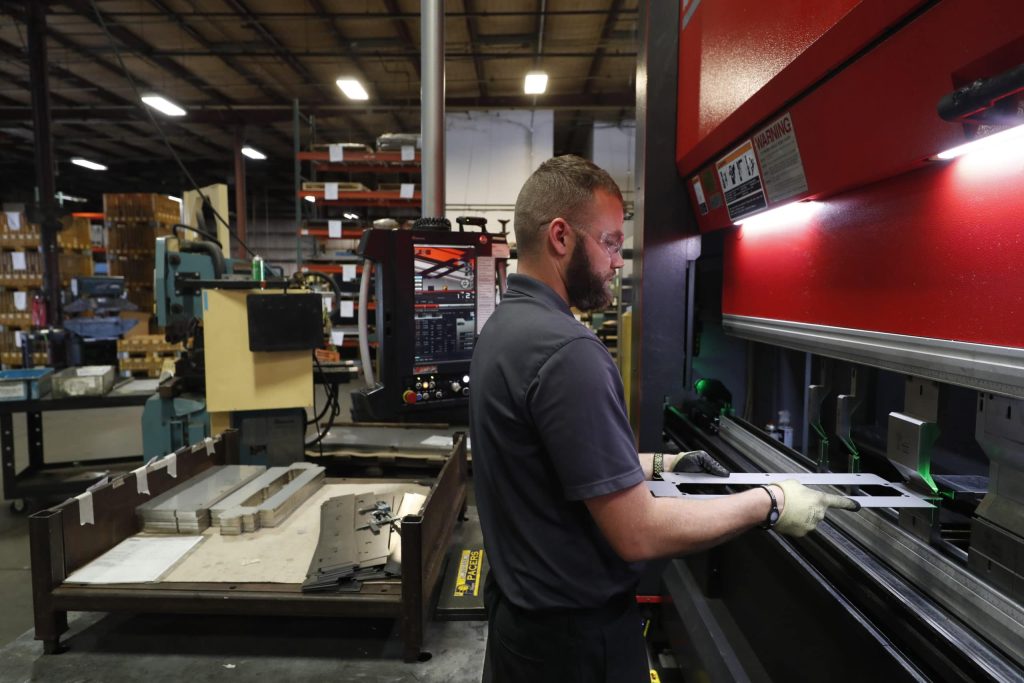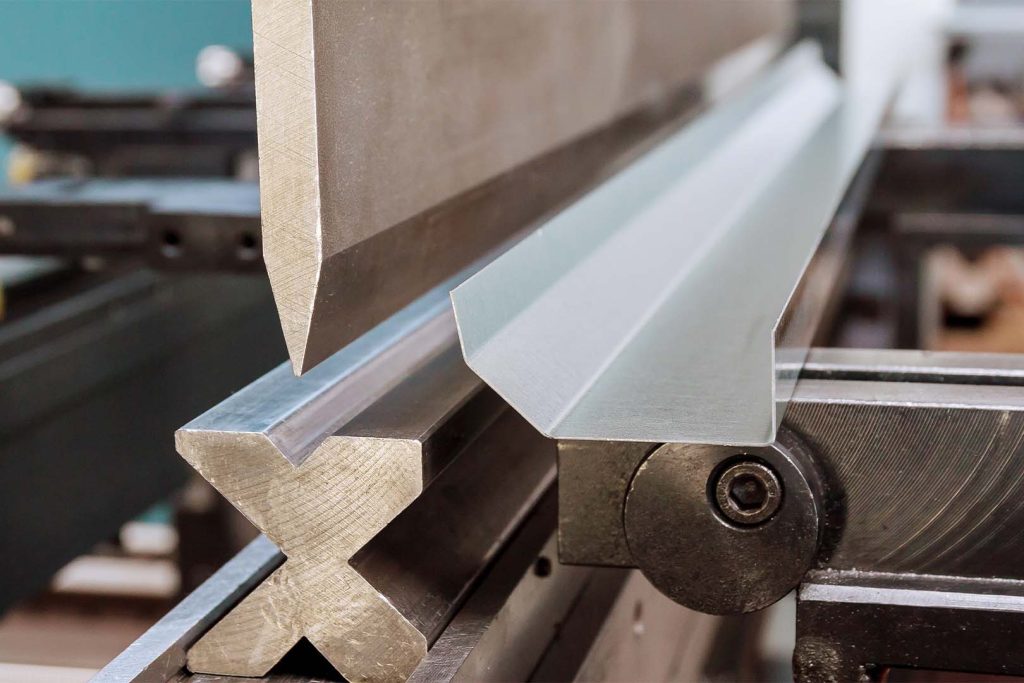Table of Contents
Cutting slots in sheet metal can be a daunting task, especially if you’re not familiar with the process. However, with the right tools and techniques, anyone can become proficient at cutting slots in sheet metal. Whether you’re a DIY enthusiast or a professional metalworker, this guide will provide you with the knowledge and skills needed to make precise cuts in sheet metal.
Sheet metal is a versatile material that can be used in a variety of applications, from automotive repair to construction. However, before you can use it, you need to know how to cut it properly. In this guide, we’ll cover the basics of cutting slots in sheet metal, including the tools you’ll need, the techniques you’ll use, and the safety precautions you’ll need to take. So, let’s get started!
- Step 1: Wear safety goggles and gloves before starting the cutting process.
- Step 2: Use a center punch to mark the slot’s starting and stopping points.
- Step 3: Drill a hole at the starting point of the slot using a drill bit with the same diameter as the slot.
- Step 4: Use a jigsaw or a hacksaw to cut along the marked line.
- Step 5: Use a file to smooth the edges of the slot.
- Step 6: Clean the sheet metal to remove any debris or metal shavings.
How to Cut Slots in Sheet Metal: A Complete Guide
Cutting slots in sheet metal is an essential skill for any metalworker. The process of cutting slots in sheet metal may seem daunting at first, but with the right tools and techniques, it can be done with ease. In this article, we will guide you through the steps to cut slots in sheet metal.
Tools Required to Cut Slots in Sheet Metal
Cutting slots in sheet metal requires some specific tools. Here are the tools required:
1. Sheet metal snips: These are specially designed scissors for cutting sheet metal.
2. Cutting discs: These are discs that attach to an angle grinder and are used to cut through sheet metal.
3. Jigsaw: A jigsaw can be used to cut slots in sheet metal, but it’s not recommended for thicker metals.
4. Drill: A drill can be used to make starter holes, which can then be expanded to create slots.
When selecting your tools, ensure that they are of high quality and designed for metalworking. Low-quality tools can easily break or damage the sheet metal, leading to an unsuccessful outcome.
How to Cut Slots in Sheet Metal: Step-by-Step Guide
1. Measure and mark the sheet metal: Use a measuring tape and a marker to measure and mark the location of the slot on the sheet metal. Ensure that the measurements are accurate to get the desired outcome.
2. Use a punch and hammer to create a starter hole: Place the punch on the mark and hit it with a hammer to create a small hole. This hole will act as a starting point for the cutting tool.
3. Use a cutting disc or sheet metal snips to cut the slot: Attach the cutting disc to the angle grinder or use the sheet metal snips to cut the slot. Start from the starter hole and move the tool along the marked line, making sure to apply even pressure.
4. Use a file to smooth out the edges: After cutting the slot, use a file to smooth out the edges. This will ensure that the slot is clean and free of sharp edges that can cause injury.
Benefits of Cutting Slots in Sheet Metal
Cutting slots in sheet metal has a range of benefits. Some of these include:
1. Improved precision: Cutting slots in sheet metal allows for precise cuts, ensuring that the final product is of high quality.
2. Increased efficiency: Cutting slots in sheet metal allows for faster and more efficient production processes.
3. Versatility: Sheet metal can be cut into a range of shapes and sizes, making it a versatile material for a range of applications.
Cutting Slots in Sheet Metal: Tips and Tricks
Here are some tips and tricks to keep in mind when cutting slots in sheet metal:
1. Use the right tool for the job: As mentioned earlier, using the right tool is vital for successful slot cutting.
2. Wear protective gear: When working with sheet metal, always wear protective gear such as gloves and eye protection.
3. Practice on scrap metal: If you’re new to cutting slots in sheet metal, practice on scrap metal before moving on to your final product.
Cutting Slots in Sheet Metal: Sheet Metal Snips vs. Cutting Discs
Sheet metal snips and cutting discs are two of the most popular tools used to cut slots in sheet metal. Here are some pros and cons of each:
Sheet Metal Snips:
Pros:
– Ideal for smaller cuts and intricate designs
– No need for power tools
– Easy to use and maneuver
Cons:
– Limited to thinner metals
– Can be tiring on the hands
Cutting Discs:
Pros:
– Ideal for thicker metals
– Can be used with an angle grinder for increased efficiency
– Fast and precise
Cons:
– Can be dangerous if not used correctly
– Can create a lot of noise and debris
Cutting Slots in Sheet Metal: Common Mistakes to Avoid
When cutting slots in sheet metal, there are some common mistakes that can be easily avoided. These include:
1. Using the wrong tool: As mentioned earlier, using the wrong tool can lead to an unsuccessful outcome.
2. Cutting too quickly: Cutting too quickly can cause the tool to slip, leading to uneven cuts.
3. Not wearing protective gear: Always wear protective gear when working with sheet metal to avoid injury.
Conclusion
Cutting slots in sheet metal requires some specific tools and techniques, but it’s a skill that can be learned with practice. Always ensure that you have the right tools and protective gear before starting, and practice on scrap metal before moving on to your final product. By following the steps outlined in this article, you’ll be able to cut slots in sheet metal with ease and precision.
Frequently Asked Questions
Here are some common questions about cutting slots in sheet metal:
What tools do I need to cut slots in sheet metal?
To cut slots in sheet metal, you will need a metal cutting saw or a rotary tool with a cutting wheel attachment. You may also need a metal file or sandpaper to smooth out the edges of the slot.
It is important to wear safety gear such as gloves and eye protection, and to work in a well-ventilated area to avoid inhaling any metal dust or debris.
What is the best way to mark the location of the slots?
The best way to mark the location of the slots is to use a ruler or measuring tape to make precise measurements on the sheet metal. You can then use a scribe or a sharpie to mark the location of the slots before cutting.
It is important to double-check your measurements before cutting to ensure that the slots are in the correct location.
How do I make sure the slots are straight and even?
To ensure that the slots are straight and even, it is important to use a guide or a template to help you make accurate cuts. You can use a straight edge or a piece of metal as a guide, or create a template out of cardboard or paper.
It is also important to take your time and make slow, steady cuts, checking your progress frequently to ensure that the slots are straight and even.
What is the best technique for cutting slots in sheet metal?
The best technique for cutting slots in sheet metal is to make a series of small, shallow cuts rather than trying to cut through the metal in one pass. This will help you maintain control and ensure that the slots are straight and even.
It is also important to keep the saw or rotary tool perpendicular to the sheet metal to avoid creating uneven or angled slots.
What should I do to clean up the edges of the slots?
To clean up the edges of the slots, you can use a metal file or sandpaper to remove any burrs or rough edges. It is important to take your time and work slowly to avoid damaging the sheet metal or creating uneven edges.
You can also use a deburring tool or a chamfering tool to create a beveled edge around the slot, which can help prevent sharp edges and make the slot look more finished.
In conclusion, cutting slots in sheet metal can be a challenging task, but with the right tools and techniques, it can be done efficiently and accurately. It is important to choose the appropriate cutting tool, such as a saw or plasma cutter, and to ensure that it is properly calibrated and maintained.
Another important consideration is to use the correct cutting technique, whether it is a straight cut or a curved cut. It is also important to take precautions when cutting sheet metal, such as wearing protective gear and securing the sheet metal properly.
By following these guidelines and taking the necessary precautions, you can successfully cut slots in sheet metal and achieve the desired results. With practice and experience, you can become proficient at this important skill and apply it to a variety of projects.
Request a quote today!
[contact-form-7 id="1578" title="Contact form"]
Please compress the file into a ZIP or RAR file before uploading. Alternatively, send through your RFQ by email.
enquires@unitymanufacture.com




